Five Amazing Indian Women in Yoga
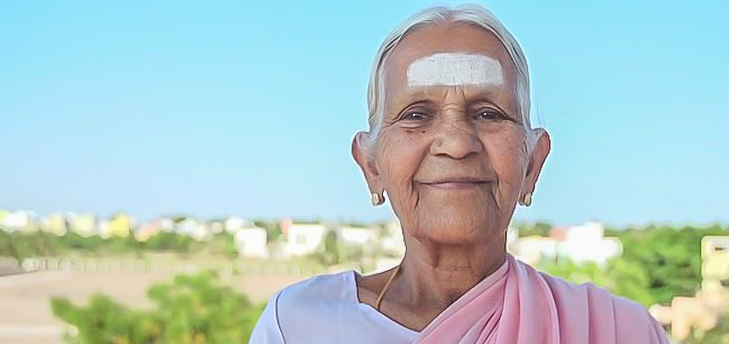
In the vibrant heart of yoga’s homeland, Indian women remain steadfast guardians of its ancient wisdom, offering a depth of practice rarely found in the modern, fitness-driven yoga scenes of the West. Rooted in the cultural, spiritual and philosophical traditions that shaped yoga over millennia, they bring an authenticity that extends far beyond physical postures – immersing themselves in pranayama, mantras, meditation and the ethical principles of the yogic path. Their role is vital, not only in preserving the integrity of traditional disciplines, but also in ensuring that yoga remains a living, evolving heritage.
Indian Women in Yoga Today
Today, the majority of yoga teachers and practitioners around the world are women. Indian women in particular, hold a distinctive place as both inheritors and living vessels of an unbroken tradition, setting them apart from their male counterparts. While Indian men have historically occupied an authoritative role of Guru, and in many instances have exploited it, the women frequently embody a more integrative, life-woven approach—teaching not only asana and philosophy, but also embedding yoga into the rhythms of daily living, care and community service.
Western yoga trends frequently fall prey to cultural appropriation and often emphasize appearance, performance or marketable lifestyle branding. But Indian women view yoga as an authentic expression of their heritage. Its teachings, practices and philosophies are deeply integrated into a broader framework of Indian spirituality, religious customs, etiquette, morality and social codes.
Despite all these complexities, there are many South Asian female yoga practitioners, influencers and teachers coming forward to educate consumers and the community about this divide. Serving as bridges between the traditional and modern expressions of yoga, their presence challenges stereotypes and confronts misconceptions. This indeed offers a richer understanding of yoga beyond its Western interpretations.
Five Amazing Indian Women in Yoga
The five exceptional Indian women below re-direct the focus from primarily physical postures or commercial aspects, to yoga’s true essence. Emphasizing mindfulness, spirituality and inclusivity, they inspire people to embrace yoga as a way of life, not just as a scheduled class. Whether practicing it as a form of physical and mental wellness or as a deeper spiritual discipline, these women engage with the practice in ways that honour its ancient roots and teachings, passing it down through generations with respect for its sacred traditions.
Nanammal
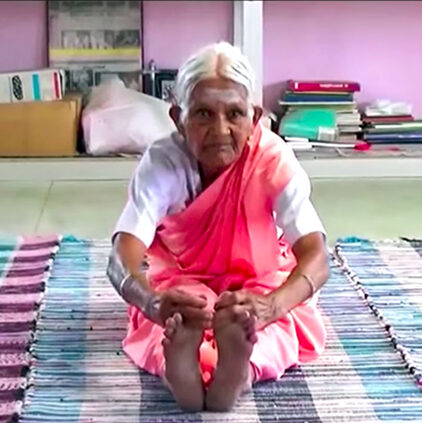
“I never stopped practicing yoga at any point in my life. That’s the secret of my health.”
This extraordinary grandmother was the 2nd oldest yoga teacher in the world. She was born and raised in southern India and had been a yoga practitioner since the age of eight. She continued to practice and teach in a pink cotton saree on a simple rug at her school in Coimbatore until her passing in 2019 at the age of 99.
Nanammal was committed to upholding the spiritual traditions of yoga and strictly adhered to daily traditional wellness practices. She properly incorporated pranayama techniques in her classes and believed that if you’re rushing and working up a sweat, you’re doing it wrong. After all, yoga is meant to be steady, comfortable and blissful.
Having received multiple awards for her remarkable achievements, she unceasingly focused on spreading awareness of proper health among the women of her community.
Learn more: The BBC’s article as well as this inspirational video.
Ira Trivedi
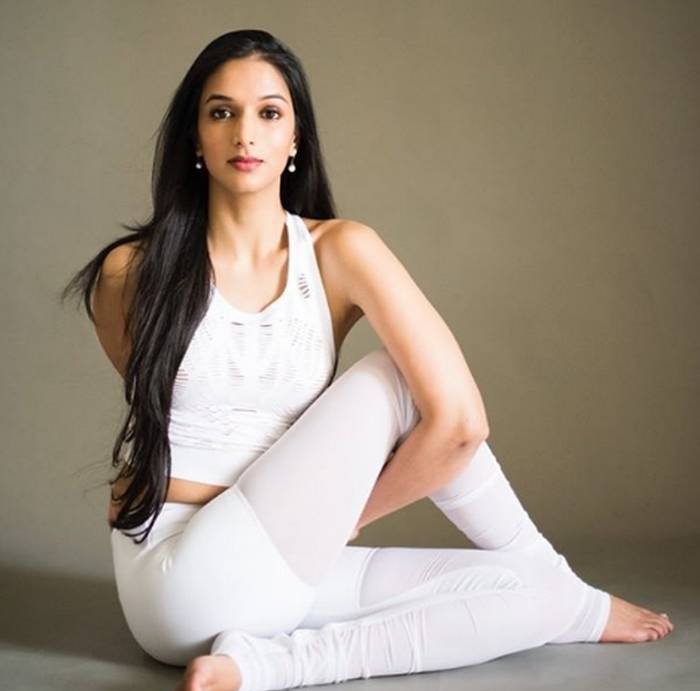
“We’re always searching. We search through travel, we search through apps now… we search for adventure, we search for excitement in our lives, but that journey, I realized, is actually an inward journey… the most excitement and the most joy is actually the journey within.”
Ira is an Indian columnist, author and Master of Yoga (Yoga Acharya) from the Sivananda Institute. Known for her insightful and bold writings on well-being, women, gender issues and cultural awareness, she has won several awards over the years and has been honoured as one of 2017 BBC’s 100 Most Influential Women in the World.
In addition to authoring “The 10-Minute Yoga Solution” and “Om the Yoga Dog,” Ira is the founder of the online platform yoglove.in, the yoga app Ira Yoga Wellness and the non-profit Namami Yoga, a charity dedicated to teaching yoga to underprivileged children. She was also one of the few women to lead the acclaimed yoga session at Rajpath, New Delhi during the very first International Day of Yoga.
Learn more: Visit Ira’s website.
Dr. Hansa Yogendra
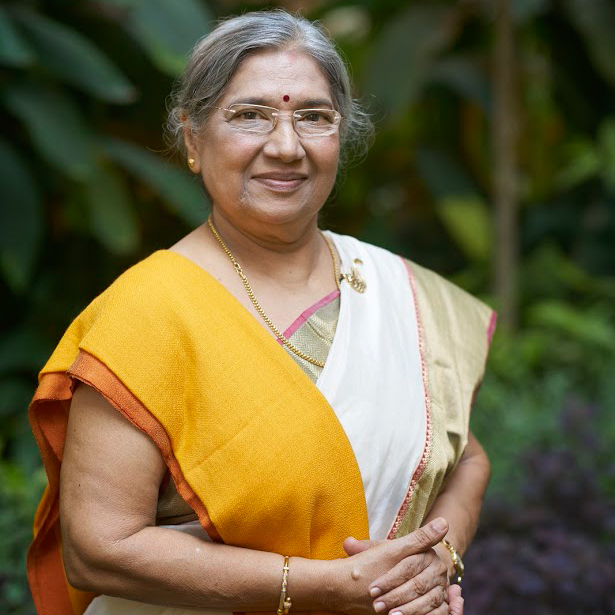
“In Yoga, old age is defined by thoughts and not numbers. Old age starts from where the learning stops.”
Dr. Yogendra is not only a yoga teacher, but an epitome of achievement. She is a charismatic speaker, a celebrated author, a well-known television personality, a respected educator and a sharp businesswoman. With prestigious positions in the Indian yoga community, an impressive degree in law, contributions to medical research and several accolades under her belt, she was one of the few female yoga teachers to lead the record-breaking event at Delhi’s Rajpath on the first ever International Yoga Day.
As the director of The Yoga Institute in Mumbai, Dr. Yogendra is known for her compassionate personality and radiant aura. She has even taken it upon herself to educate women on how yoga can have a positive impact on their health and their lives. It’s no wonder that she was honoured with a Lifetime Achievement Award for being an ambassador of yoga, peace and harmony.
Learn more: The Yoga Institute’s YouTube channel
Rukmini Vijayakumar
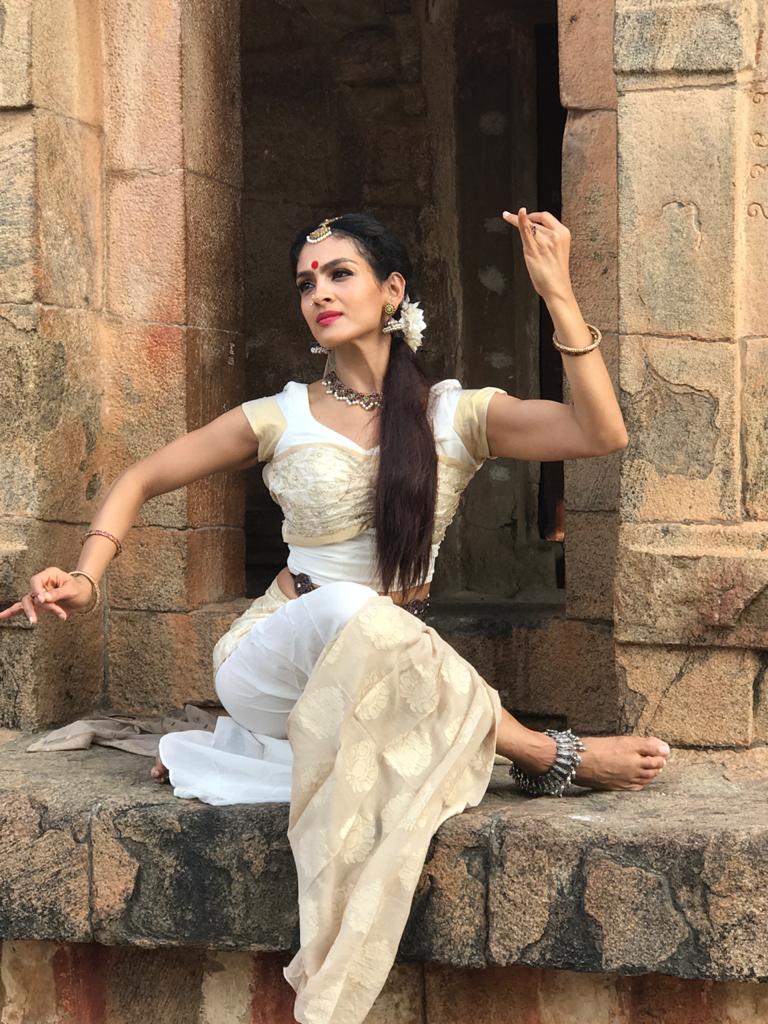
“Yoga is not about restrictions at all. Yoga is about freeing oneself of the limited perceptions we have of ourselves and the world around. It is about finding the ability within us to see the unity in all of creation.”
Rukmini is a yoga practitioner, choreographer and acclaimed Bharatanatyam dancer. Bharatanatyam is a classical dance from Tamil Nadu, India which is actually considered to be a form of Bhakti Yoga. It incorporates many yogic elements, philosophies, expressions, mudras and asanas. Rukmini gracefully demonstrates these aspects through her dance, usually dressed in elegantly draped sarees and traditional Indian attire.
When she’s not performing in sold-out shows all over the world, Rukmini runs her own dance company in India called Raadha Kalpa and maintains an inspiring presence on social media. She unfailingly upholds traditional yogic principles, teaches its philosophy, reclaims Indian femininity and beautifully illustrates ‘the yoga of movement’ to the world.
Learn more: Rukmini performing yoga asanas and the Sun Salutation.
Ananta Ripa Ajmera
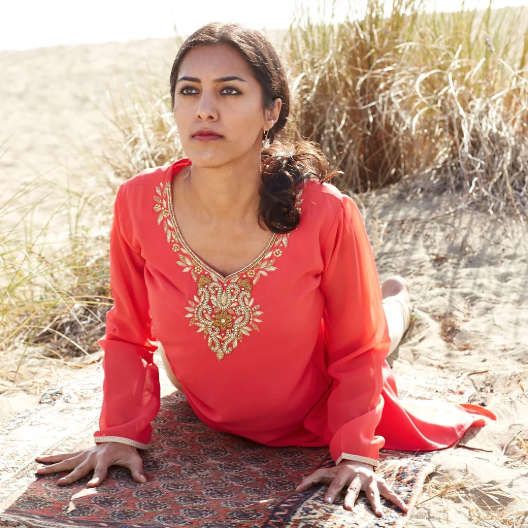
“Cultivate the garden of your mind. Cutting that which does not serve you makes room for something positive to grow in its place.”
Ananta Ripa Ajmera is an Ayurvedic health practitioner and lecturer, a podcast host, a teacher of yoga and the author of the best-selling book, ‘The Ayurveda Way: 108 Practices from the World’s Oldest Healing System for Better Sleep, Less Stress, Optimal Digestion, and More.’
Ananta is American, but she is of Indian origin and descends from a long line of Ayurvedic healers in India. She received her yoga teacher’s certification from the Sivananda Ashram in Kerala and her Ayurvedic qualifications under the tutelage of Acharya Shunya. As Ayurveda is one of the sister sciences of Yoga, Ananta perfectly incorporates this Vedic system of natural healing with authentic yogic disciplines.
Learn more: Visit Ananta’s website
Are there any other Indian women in Yoga that you’d like to recognize or discuss? Leave your comments below!

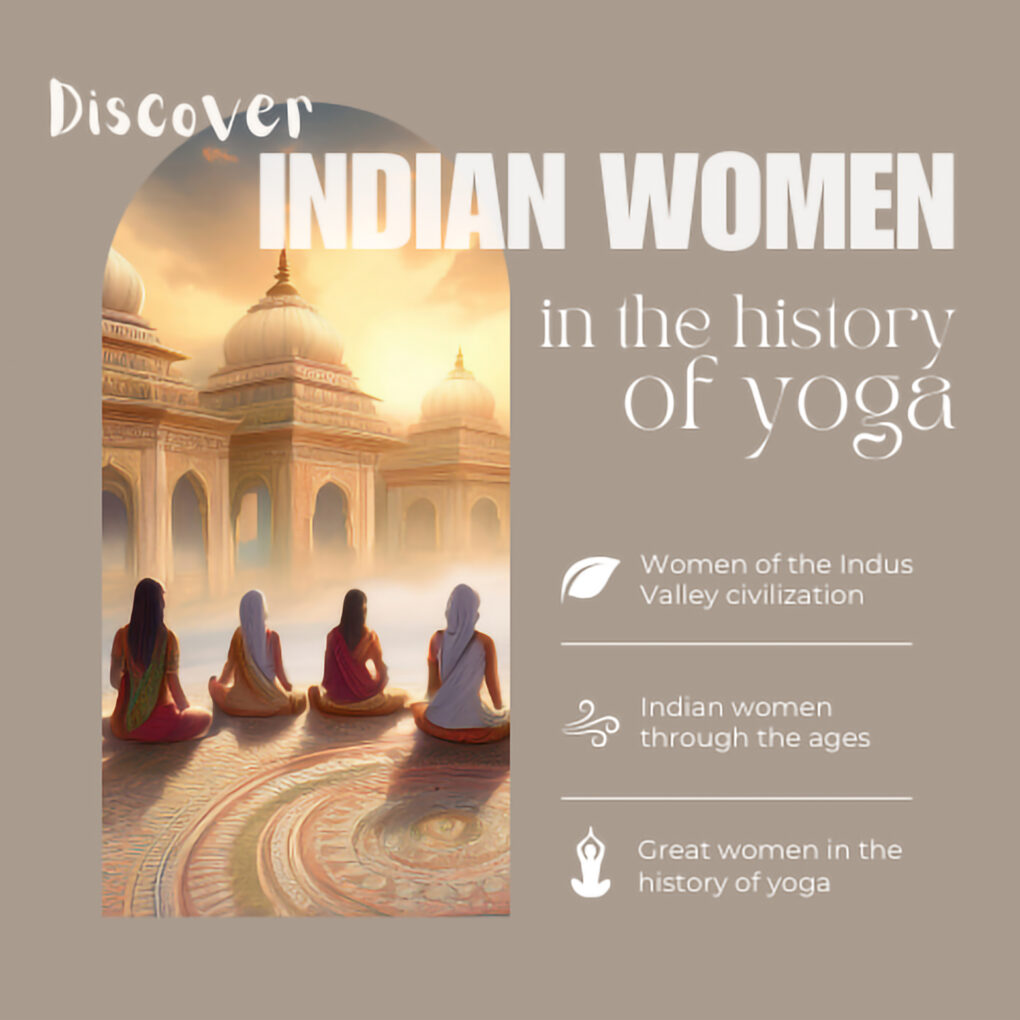
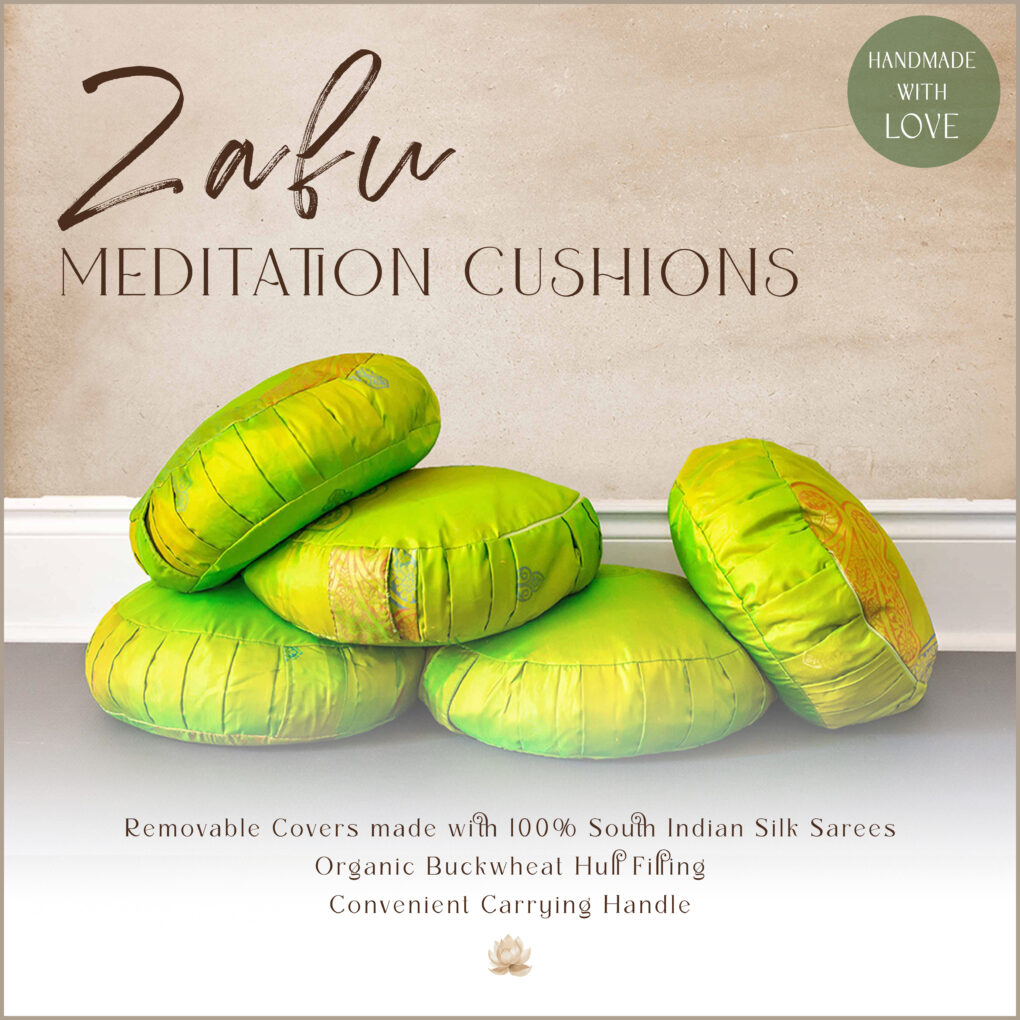

Hi Andrea, your website is very informational and everything is so easy to find. It makes me want to learn more about yoga. It was interesting to learn about the women in yoga.
Glad you found it to be an enjoyable read!
Thank you for writing this article, I really enjoyed learning about these amazing women in the world of yoga! 🙂
You’re welcome Jon 🙂
Wow! I really need to get into yoga, its actually much harder then people make out! haha
Nanammal sounds amazinggggg, how old is she exactly?
I believe she’s 99!
I loved reading this article about these amazing women who believe in healing through yoga.
I have been very interested in starting yoga as I had heard a lot of benefits of it.
Reading about Nanammal has motivated me to start because it has contributed to her living longer.
Great read.
Thanks!
These women are truly amazing and inspirational, keep up the good work on your site!
Will do! Glad you liked it!
What a fascinating article. And what fantastic women!
I love the fact that Nanammal practices restraint with her yoga and doesn’t think we should be building up a sweat 🙂 I live in the UK where hot yoga has become quite a ‘industry’ over the years. I actually stopped going because it was so full of many Alpha type women all competing with each other!
The heat also actually did my body more harm than good as well, as I’m prone to Pitta imbalances and the heat of the hot yoga made things worse. So it’s very interesting to hear about yoga from the perspective of these women, who have a beautifully holistic approach.
A lot of these modern trends and inventions (such as hot yoga, beer yoga, goat yoga and such) really have very little to do with Yoga.
But these women stick to the authenticity of the practice. So they are fantastic indeed!
Hot yoga is not healthy and can be dangerous for some people.
Hi, thank you for this amazing article! I’m impressed by Nanammal. As a sportive woman, I hope that I’ll be able to do the same later if I live that long. Have a nice day!
Nanammal is pretty amazing, isn’t she!
You have a great day as well!
Hi Andrea,
What a fantastic post! So inspiring! All of these women are so strong and powerful and you can’t help but admire their determination and perseverance. For Nanammal to be nearly 100 and still practising is amazing.
I loved reading about them. Your website is a wealth of knowledge. You are an inspiring lady. So glad I found you. Sharing this with family and friends. Thanks again,
Kev
What a wonderful comment. Thank you Kev!
What about you, Andrea? You’re a pretty amazing Indian woman in Yoga!
🙂
I LOVE seeing all of these incredible women! I really believe there is a lot to learn from these wonderful humans – I live in a major city and there is a huge influx of trend yoga studious popping up. Love the purity of what each one of them is talking about here.
I agree! And I’m so glad that this inspired you!
Yogamani Kalaimamani Yogacharini Meenakshi Devi Bhavanani is Director and Resident Acharya of the world famous International Centre for Yoga Education and Research (ICYER / Ananda Ashram) at Pondicherry.
She is the Dharmapatni and senior most disciple of the internationally acclaimed Yoga master, Yogamaharishi Dr. Swami Gitananda Giri Guru Maharaj and has devoted her life to his teachings and to institutions founded by him.
Ammaji as she is popularly known is considered one of the major international leaders of the modern Yoga movement and is on various national committees in the Government of India for the propagation of Yoga.
Her defining books “The History of Yoga from Ancient to Modern Times” (Vol I and Vol II) are path breaking efforts and hailed as the “Defining publications on the history of Yoga to date.”
Having trained thousands of students worldwide in the past 5 decades, she is considered a pioneer in bringing the classical Carnatic Performing Fine Arts and Yoga to the common people in Pondicherry. She is a Guru and former performing artist of Bharata Natyam.